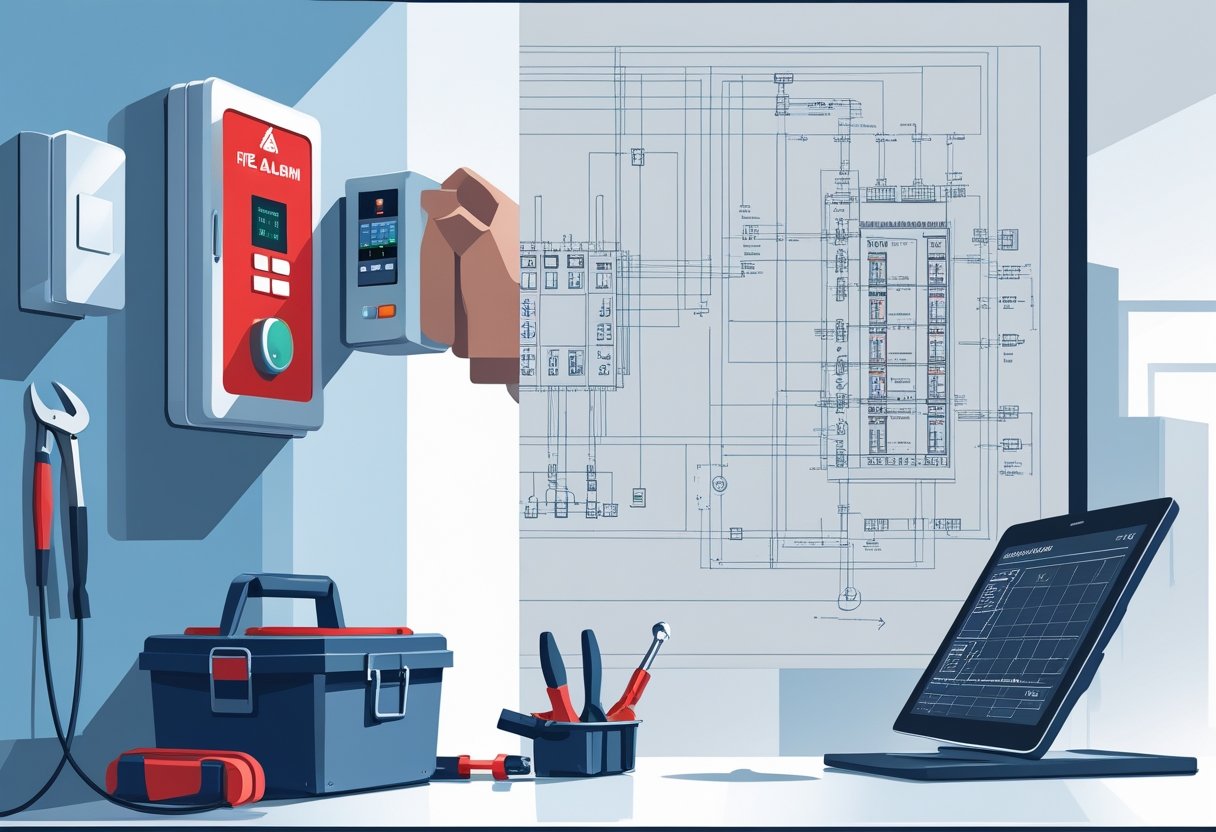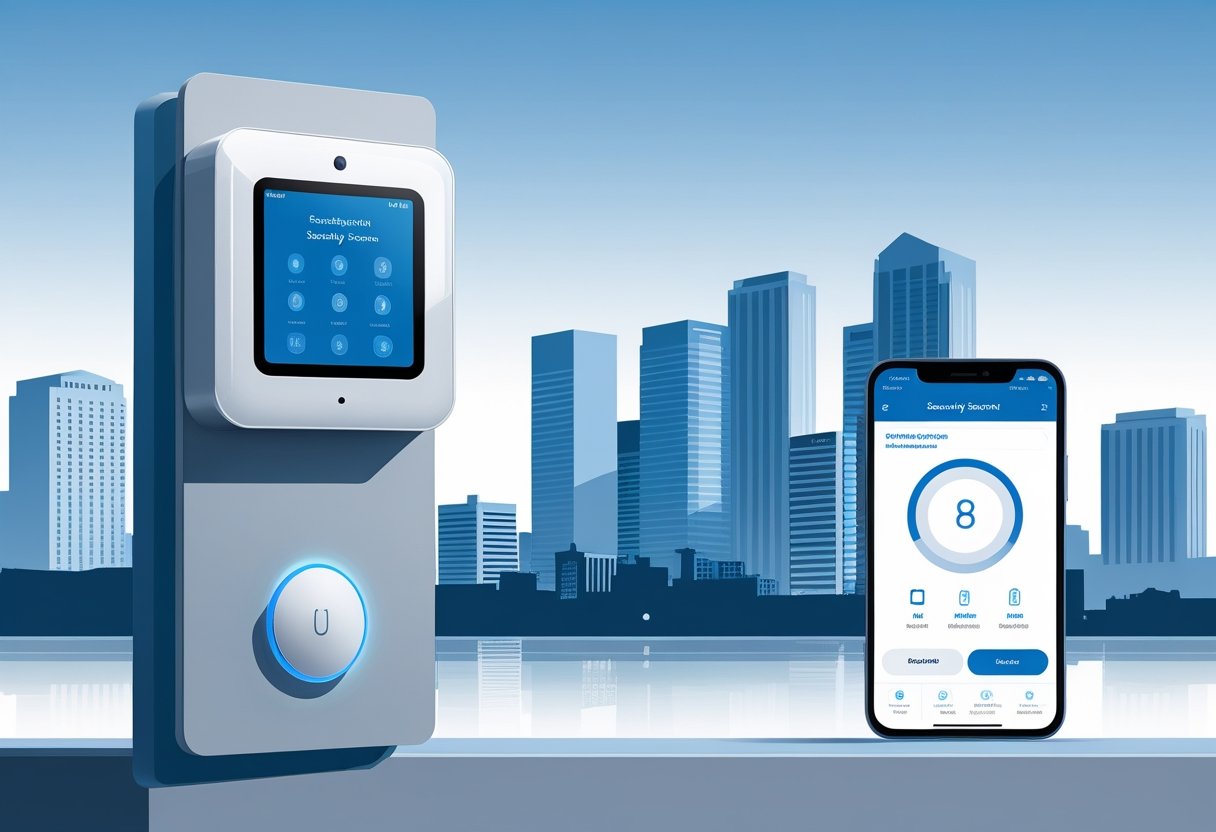Maintaining a fire alarm system is crucial for ensuring the safety of your property and its occupants. The typical annual maintenance cost for fire alarm systems ranges from $500 to $2,000, depending on the complexity and scale of the system. Regular inspections and prompt servicing not only help in preventing costly repairs later but also keep you compliant with safety regulations.
In the greater Houston area, ensuring that your fire alarm system is functioning optimally can make a significant difference. Addressing maintenance needs proactively helps in avoiding emergencies and guarantees that your alarm will work effectively when needed most. Understanding the costs involved prepares you to budget adequately for this essential service.
Investing in maintenance not only safeguards lives but also protects your investment in property. By budgeting for annual inspections, you maintain peace of mind while ensuring compliance with local safety standards in Houston.
Understanding Fire Alarm System Maintenance Costs
Maintaining a fire alarm system is essential to ensure the safety and functionality of your property. Understanding the costs associated with maintenance is crucial for effective budgeting and ensuring your system operates efficiently over time.
Key Factors Affecting Maintenance Expenses
Several factors influence the maintenance costs of fire alarm systems. The type of system installed plays a significant role. For instance, a commercial fire alarm system typically incurs higher maintenance costs than residential systems due to the complexity and number of devices involved.
Age and condition of the system are also vital. Older systems may require more frequent repairs and part replacements, contributing to increased costs.
Finally, local regulations and service contracts can affect expenses. In the greater Houston area, complying with city codes may require regular inspections and maintenance, leading to additional fees.
Typical Annual and Ongoing Fees
Annual maintenance fees for fire alarm systems can vary widely. On average, you can expect to pay about $200 or more for a yearly inspection from licensed technicians. Monthly inspections may range from $50 to $100, depending on the system's complexity and the number of devices being serviced.
Keep in mind that initial installation costs, often ranging from $1,000 to $2,500 for standard systems, do not cover ongoing maintenance. Planning for these expenses will help you maintain compliance and ensure safety.
Cost Differences Between Commercial and Residential Systems
When comparing costs, commercial fire alarm systems generally present higher maintenance expenses. This is due to their larger scope, including a greater number of devices such as smoke detectors, pull stations, and alarms.
For smaller residential systems, inspections usually cost less and involve fewer devices.
However, the complexity of commercial systems often results in higher service contract costs, which can include more detailed inspections and frequent testing as mandated by local authorities. Understanding these differences is essential for budgeting effectively in your property management efforts in Houston.
Breakdown of Essential Components and Their Maintenance Costs
Understanding the key components of fire alarm systems and their associated maintenance costs is crucial for effective budgeting and safety. Each component serves a specific function, contributing to the overall effectiveness of fire safety measures.
Pull Stations and Manual Devices
Pull stations are essential for manual fire alarm activation. They provide immediate access for occupants to report a fire, facilitating quicker responses. Maintenance costs typically range between $50 and $150 per unit annually. Regular inspection and testing are vital for ensuring functionality.
Maintenance includes checking for physical obstructions and confirming that the pull station is correctly mounted. You should also verify that the pull station's signaling system communicates effectively with the central control panel. Consider conducting monthly checks, which can help identify any issues early.
Smoke Detectors
Smoke detectors are critical for early fire detection. They can utilize ionization or photoelectric sensors, each having unique maintenance needs. Annual maintenance for smoke detectors can run between $30 and $100 per unit, depending on the type.
Regular tasks include cleaning the detector to prevent dust accumulation and testing the battery backup. Monthly checks are recommended to ensure they function correctly. Replacing batteries at least once a year is crucial for maintaining reliability. Consider testing interconnected systems to confirm that alerts reach all necessary areas.
Heat Detectors
Heat detectors activate based on temperature changes, making them suitable for areas where smoke detectors may produce false alarms. Maintenance costs generally fall between $20 and $80 annually per unit.
Inspection routines should include checking for proper alignment and cleaning any debris that might affect performance. It’s essential to test the circuits and ensure correct communication with the fire alarm control panel. Routine checks can help you ensure that heat detectors respond optimally when needed.
Notification Devices and Alarms
Notification devices, including horns and strobes, are vital for alerting occupants of an emergency. Their maintenance costs can vary, averaging between $40 and $100 annually per device.
Maintenance involves testing the sound levels to ensure they meet safety standards and checking strobe functionality. You should also inspect wiring for any signs of wear or damage. Regular programming checks can confirm that the devices are set up correctly to communicate effectively in an emergency, ensuring that alarms are heard and seen by all occupants.
Fire Alarm System Types and Their Impact on Maintenance Costs
Understanding the types of fire alarm systems is crucial as they significantly influence maintenance costs. Each system type has distinct features that affect installation, upkeep, and overall expenses.
Conventional Fire Alarm Systems
Conventional fire alarm systems are the most basic type available. They typically consist of a fire alarm control panel and a series of detection devices connected to zones.
Maintenance costs for these systems tend to be lower initially. However, you must maintain each zone separately, which can add up over time. Routine inspections and component replacements are essential to ensure reliability.
These systems generally require annual testing of all devices. If you have a larger property, the costs can accumulate quickly as you manage a greater number of devices.
Addressable and Advanced Systems
Addressable fire alarm systems provide more sophistication than conventional systems. Each device has a unique address, allowing precise location identification in the event of an alarm.
Though the initial installation cost is higher, these systems can lead to lower long-term maintenance expenses. Regular testing can be streamlined, and fewer inspections may be needed due to their advanced monitoring capabilities.
With features such as alarm verification and automated diagnostics, you may face reduced service calls. Investing in this type can translate to significant savings over time with your maintenance budget.
Comparison of Wired vs Wireless Maintenance Needs
When considering wired versus wireless fire alarm systems, maintenance needs differ greatly.
Wired systems typically require more hands-on maintenance due to potential wear on connections and cables. Regular checks are necessary to ensure all components function properly, which can add to your costs.
In contrast, wireless systems may have lower installation costs and fewer maintenance demands. Battery checks are vital, as you'll need to ensure devices are powered and operational.
However, any issues with signal interference can lead to additional costs for troubleshooting. Understanding these differences can help you budget more effectively for your fire alarm system maintenance.
Additional Systems and Features Impacting Maintenance Cost
When considering fire alarm system maintenance costs, additional systems and features play a crucial role. Understanding these components can help you budget effectively and maintain compliance.
Carbon Monoxide Detectors Maintenance
Carbon monoxide (CO) detectors are essential for detecting this odorless gas, which can be fatal. Regular maintenance ensures these detectors function correctly. Testing should occur at least once a month, and batteries need replacement every six months.
If a detector fails to respond during testing, immediate replacement is necessary. Maintenance costs for CO detectors can range from $100 to $300 annually, depending on the number of units and any additional service contracts. Be aware that local regulations may impose specific inspection requirements.
Heat Detection and Advanced Sensors
Heat detection systems differ from standard smoke detectors, focusing on detecting temperature changes. These systems are often used in areas where smoke detection may present false alarms, such as kitchens or industrial settings.
Regular inspections and testing of heat detectors are crucial for reliability. Maintenance costs usually vary based on the system's complexity and size, averaging between $200 and $600 per year. In addition, advanced sensors may require software updates and calibration, adding to the overall maintenance expenses.
Integration with Fire Doors and Elevator Recall
Integrating fire alarm systems with fire doors and emergency elevator recall systems enhances safety during a fire. Fire doors must close automatically when an alarm is activated, and elevators need to return to a designated floor.
Routine inspection of these integrations ensures proper functionality. Maintenance for fire door systems can average $150 to $500 annually, depending on the complexity. Elevator recall systems also incur additional costs for testing and maintenance, typically around $250 to $700 per year. Regular maintenance is vital not only for compliance but also for the safety of occupants in your building.
Cost-Saving Strategies and Compliance Factors
Maintaining fire alarm systems involves balancing compliance with local regulations and controlling costs. Adopting strategic approaches can lead to effective cost savings while ensuring your systems meet necessary standards.
Service Contracts and Inspections
Establishing a service contract with a reliable fire alarm provider can yield significant savings over time. These contracts often include regular inspections and maintenance checks, which help identify potential issues before they escalate into costly repairs.
By fixing small problems early, you avoid the larger expenses associated with negligence. Many service providers in the greater Houston area offer tailored plans that suit the unique needs of your facility. Ensure that your contract covers inspections that align with local compliance requirements to keep your system functioning optimally.
Balancing Code Compliance with Budget
Staying compliant with fire safety regulations is essential. However, it should not lead to excessive spending. Review your fire codes periodically and prioritize updates that pose the most significant safety risks.
Invest in fire detection technology that meets regulatory requirements but doesn't overextend your budget. Consider systems that offer scalability, allowing you to add features as your budget permits. Exploring local grants or incentive programs designed to support fire safety upgrades may also alleviate financial pressure.
Tips for Reducing Ongoing Maintenance Costs
Regular maintenance is crucial for the longevity of your fire alarm systems. To minimize costs, establish a preventative maintenance schedule that includes routine inspections and testing of fire detection components.
Consider training your in-house staff on basic maintenance tasks to reduce reliance on external services. This can include simple activities such as battery replacements and software updates.
Additionally, keep detailed records of all maintenance activity to identify patterns that may indicate underlying problems. Such documentation can help negotiate better terms for service contracts or inspections, leading to further savings.
Frequently Asked Questions
Understanding the cost of maintaining a fire alarm system involves various considerations, such as service frequency, system complexity, and maintenance plans. This section answers common questions that can help you make informed decisions about your fire alarm system.
What factors influence the cost of maintaining a fire alarm system?
The cost of maintaining a fire alarm system can be influenced by several factors. These include the type of system installed, the size of your property, local service rates, and any specific features or technologies in use. Routine inspections and repairs also contribute to the total cost.
How often should a fire alarm system be serviced for optimal performance?
For optimal performance, a fire alarm system should be serviced at least annually. Regular checks ensure that all components are functioning correctly and meet safety standards. Some properties may require more frequent inspections based on their specific needs or previous issues.
Can the size and complexity of a fire alarm system affect the maintenance expenses?
Yes, the size and complexity of a fire alarm system can significantly impact maintenance expenses. Larger or more complex systems often need more parts and specialized services to maintain, leading to higher costs. It's essential to consider this when budgeting for maintenance.
Are there different types of maintenance plans available for fire alarm systems?
There are various maintenance plans available for fire alarm systems, typically offered by service providers. These plans can include regular inspections, emergency services, and complete system tests. Choosing the right plan for your specific needs can help manage costs effectively.
What are the potential consequences of neglecting regular fire alarm system maintenance?
Neglecting regular maintenance can have severe consequences, including increased fire risks and potential legal liabilities. A malfunctioning fire alarm may fail to alert occupants during an emergency, leading to devastating outcomes. Regular upkeep is critical for ensuring safety and compliance with regulations.
How do local regulations impact the cost of fire alarm system maintenance?
Local regulations can significantly affect maintenance costs for fire alarm systems. Compliance with specific codes often requires additional inspections or upgrades, which can add to your overall expenses. It's important to stay informed about local requirements to avoid unexpected costs.
.svg)



.svg)


.svg)



